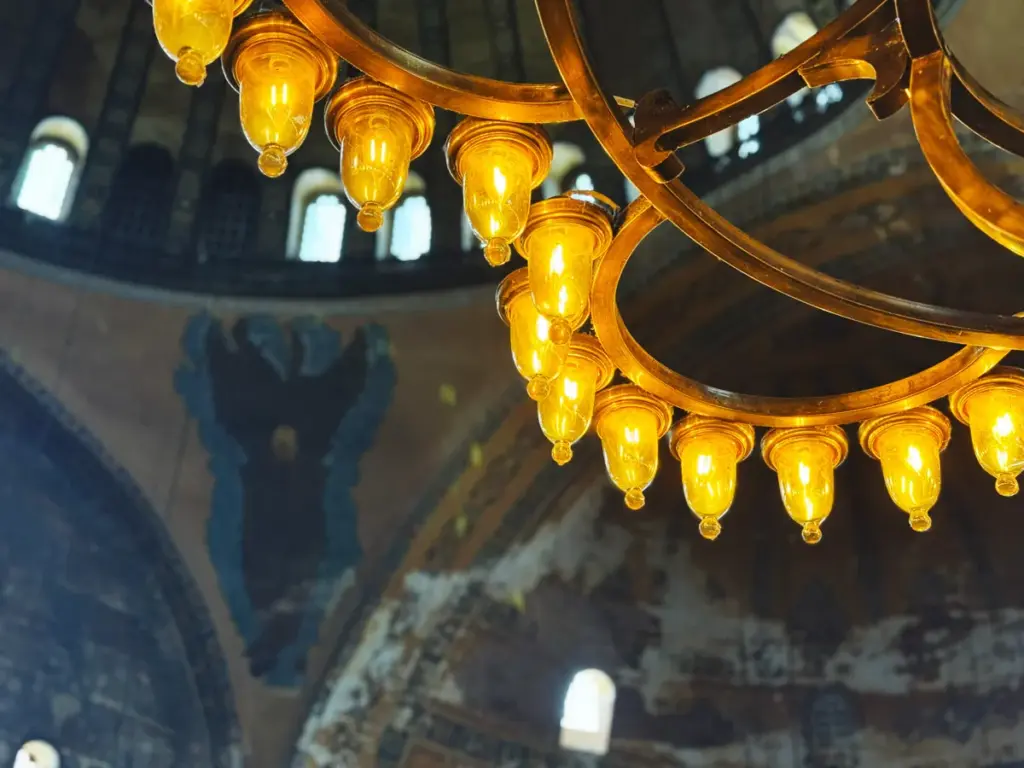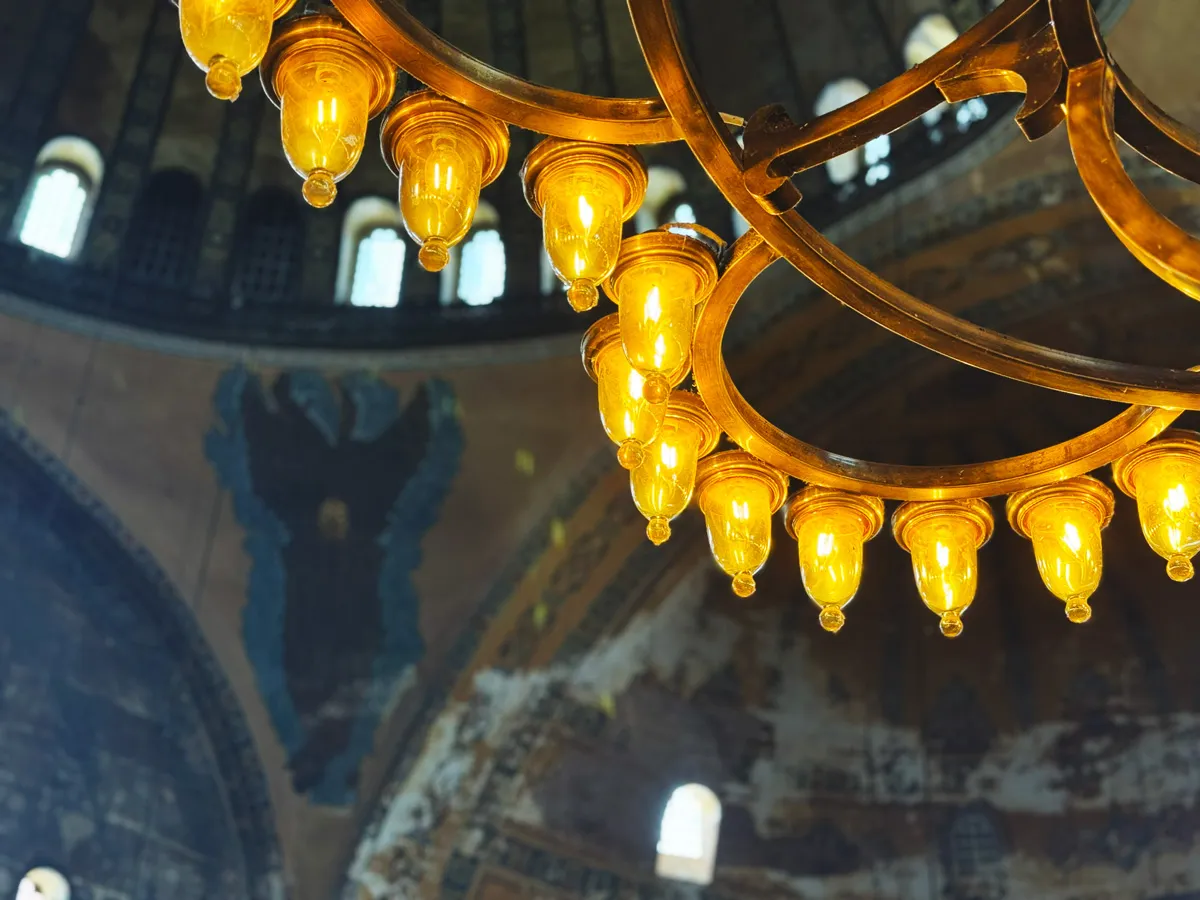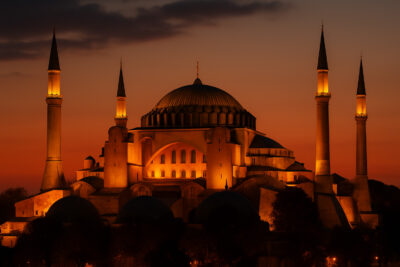Prelude — Listening to Light and Silence
The moment you step onto Hagia Sophia’s upper gallery, the air itself changes.
The echoes of ancient prayers rise softly from below;
dust motes shimmer like floating grains of gold.
 Barış
Barış“Noah, it feels as if time has stopped here.”



“Woof! The silence even looks golden!”
This upper level, once reserved for the imperial family and high nobility, still holds the masterpieces of late Byzantine art.
Let’s wander through its four legendary mosaics, blending historical photos with modern AI reconstructions to rediscover their long-faded light.
1. A Living Monument — The Changing Face of Prayer
Hagia Sophia—“Holy Wisdom”—was built in 537 by Emperor Justinian I as the crown of the Eastern Roman Empire.
It was designed to bring the radiance of heaven down to earth.


- 537 – 1453: Greek Orthodox Cathedral
- 1453 – 1935: Ottoman Mosque
- 1935 – 2020: Republic Museum
- 2020 – present: Re-consecrated as a mosque
Across civilizations, Hagia Sophia has never been destroyed—only transformed.
Why? Because every age has sensed within these walls the same sacred stillness—the meeting point between God and humankind.



“Noah, this place was protected by people of every faith.”



“Woof! The prayers changed, but the hearts stayed the same!”
2. The Floating Dome — When Light Carries Stone
The dome—31 meters wide and 55 meters high—seems to hover in mid-air.
Forty windows encircle its base, dissolving the weight of gravity in a flood of daylight.
Architects Anthemius and Isidore envisioned this ring of light as a symbol of divine presence.
At sunrise, gold glows gently.
At dusk, silhouettes deepen into shadow.
The entire structure becomes a cathedral built out of light and prayer.
3. The Gallery of Empresses — A Quiet World Above
This second floor was built for empresses, nobles, and honored guests.
Polished marble floors reflect slender columns; the bustle below fades into silence.
From here, empresses once looked down upon the liturgy,
while sacred hymns echoed off mosaic ceilings, making the golden tesserae tremble like waves.



“Woof! From where did the empress watch?”



“Right here—the south gallery. We’re standing where she once stood.”
4. The Deësis Mosaic — The Art of Supplication
モザイク-1024x615.webp)
モザイク-1024x615.webp)
モザイク-1024x576.webp)
モザイク-1024x576.webp)
(Left: present state | Right: AI reconstruction)
“Deësis” means “intercession” in Greek.
Created in the 13 th century during the Palaiologan Renaissance, it is the pinnacle of Byzantine mosaic art.
Composition
Christ Pantokrator sits in the center, flanked by the Virgin Mary and John the Baptist—
both pleading for the forgiveness of humankind.
Artistic Highlights
- Micro-sized tesserae scatter light in countless directions.
- Subtle shading brings realism to faces and flesh.
- Time-worn gaps add mystery—the silence of prayer itself.
AI restoration reveals lost drapery and color, reviving the solemn balance of the trio.
Their gaze, suspended in gold, forms a “silent dialogue for the salvation of mankind.”



“Noah, there’s no sound between them.”



“Woof! Yet I can almost hear their prayer!”
5. The Zoe Mosaic — Power and Love in Gold
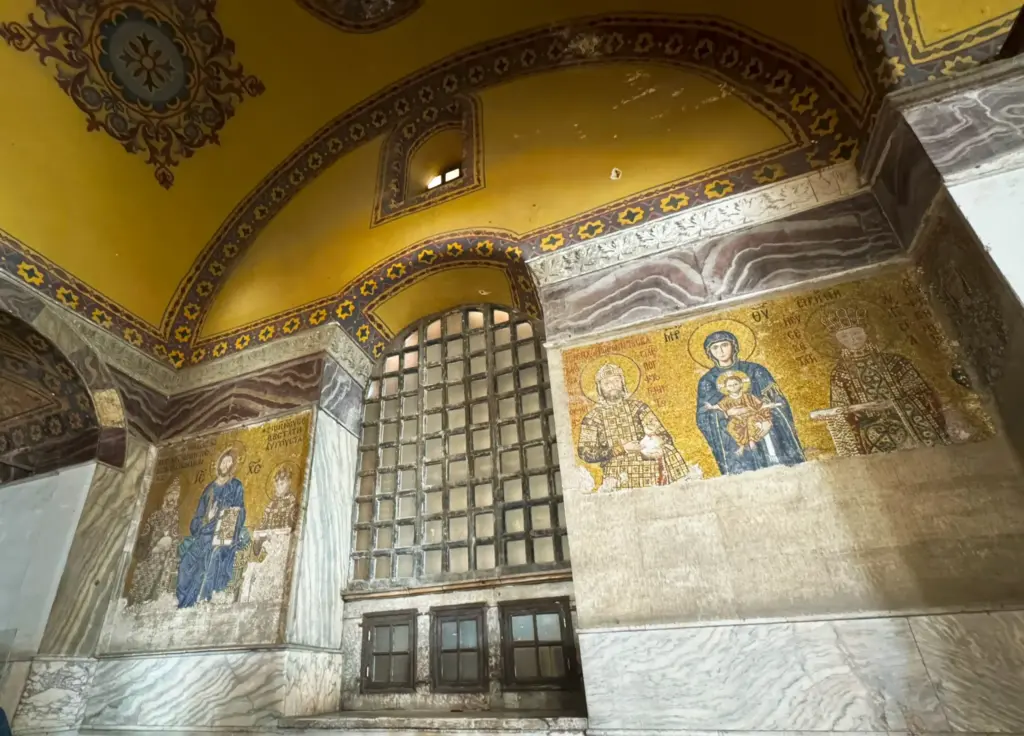

-1024x576.webp)
-1024x576.webp)
(Left: surviving mosaic | Right: AI reconstruction)
In the south gallery lies the 11 th-century Mosaic of Empress Zoe,
a portrait shimmering with devotion—and intrigue.
Characters
- Center: Christ Pantokrator
- Left: Emperor Constantine IX Monomachos
- Right: Empress Zoe
The emperor offers a purse of gold; the empress presents a scroll of donation—
a visual hymn of wealth and faith united
Historical Background
Zoe married three emperors, and each time the mosaic was altered—
new imperial faces painted over the old.
Beneath the gold leaf, faint traces of past husbands still remain—
politics and passion literally layered into stone.
AI restoration revives the faded jewel tones of their robes and crowns,
revealing the opulent life of Byzantium’s court



“Woof! She changed the emperor’s face three times?”



“In Byzantium, power and love were part of the same art.”
6. The Comnenus Mosaic — Faith and Offering


(Left: existing mosaic | Right: AI reconstruction)
Early 12 th century. Emperor John II Comnenus and Empress Irene present gifts to the Virgin and Child.
Composition
- Center: Virgin Mary with Christ Child
- Left: Emperor John II offering a money purse
- Right: Empress Irene holding a scroll
Their serene faces glow against the golden field.
AI reconstruction restores the missing lower portion—robes, jewels, and crowns—
allowing the original grandeur to return.
The result reminds us that faith was the foundation of empire.



“Noah, the emperor gave gold, the empress gave wisdom.”



“Woof! Together they held the kingdom!”
7. The Vestibule Mosaic — An Empire Offered to Heaven
モザイク-全体-1024x591.webp)
モザイク-全体-1024x591.webp)


(Left: preserved mosaic | Right: AI reconstruction)
Created in the 10 th–11 th centuries in the southwest vestibule—the entrance where worshippers first looked up—
this mosaic links faith and empire in a single image.
Composition
- Center: The Virgin Mary with Child on a Throne
- Left: Constantine the Great offering a model of Constantinople
- Right: Justinian I offering a model of Hagia Sophia
It is a visual confession of gratitude: “We built these for You.”
AI reconstruction clarifies every tower and wall on the miniature models,
showing the perfect symmetry of devotion and architecture



“Woof! They offered an entire city and a cathedral as gifts?”



“For them, to build was to pray.”
8. The Beauty of Imperfection
Across these four mosaics runs the same quiet truth: the cracks make them beautiful.
AI reconstructions don’t invent—they measure surviving pigments and geometry to make scientific estimates.
The goal isn’t to erase decay but to let prayer be reborn through it.
Every scar preserved becomes a conversation between past and present,
a whisper of eternity carried in gold dust and silence.
FAQ
- When were these mosaics created?
-
Between the 10 th and 13 th centuries, during various Byzantine dynasties. Each new emperor and empress added their own act of faith in mosaic form.
- How are they restored today?
-
Under the supervision of the Turkish Ministry of Culture and UNESCO, restoration proceeds tessera by tessera.
- Any photo tips?
-
Morning light is ideal—soft and golden.
Skip ultra-wide lenses; use a 50 mm prime to capture the human field of view and the mosaic’s depth.
To Be Continued → [Part 2]
You’ve now walked beside emperors and empresses in glittering silence.
In the next chapter, we’ll look upward—toward the four Seraphim angels, the ceiling portraits of Christ and Mary, and the mysterious Marble Door of the imperial sanctuary.
Hagia Sophia Upper Gallery [Part 2] Guardians of Light — The Seraphim, the Marble Door, and the Living Prayer Above Istanbul



“Noah, we haven’t met the ‘guardians of heaven’ yet.”



“Woof! I can’t wait to see their wings of light!”
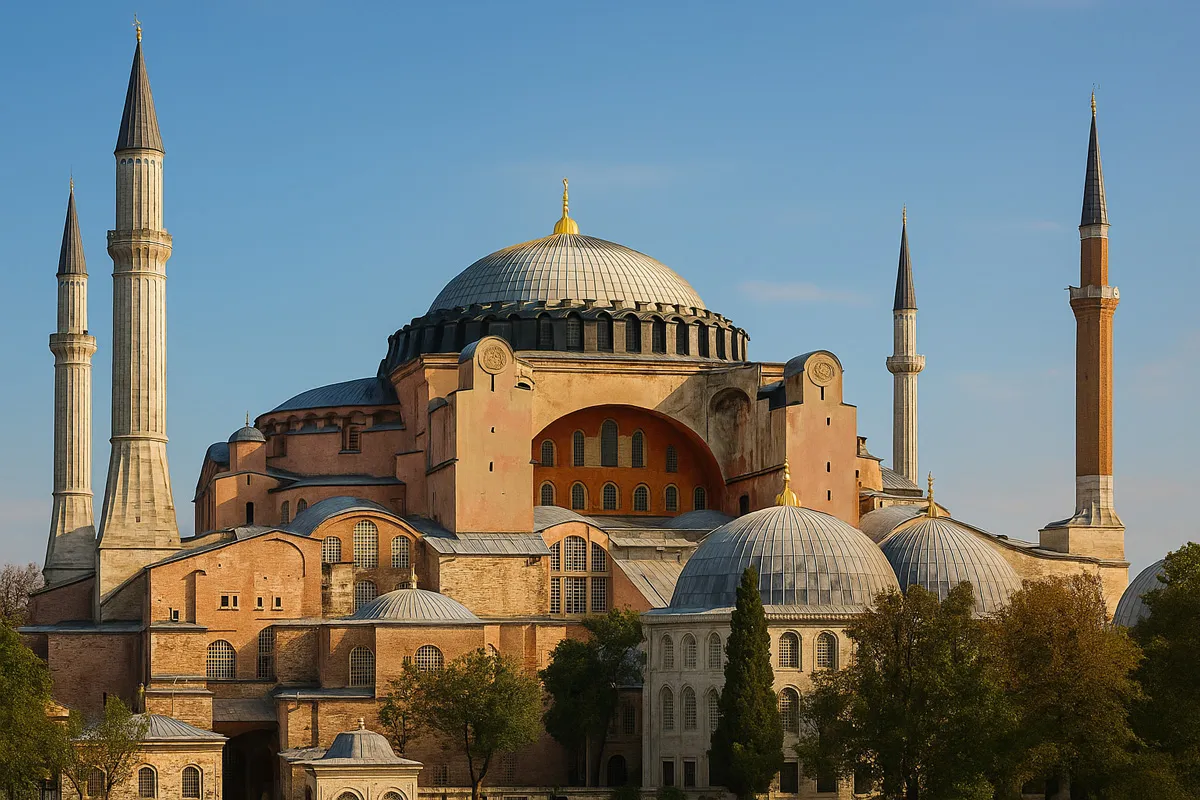

Related Reads
.jpg)
.jpg)




- Blue Mosque Complete Guide — Worship Etiquette and Photo Tips
- Topkapi Palace Walk-Through — Treasures of the Ottoman Court
